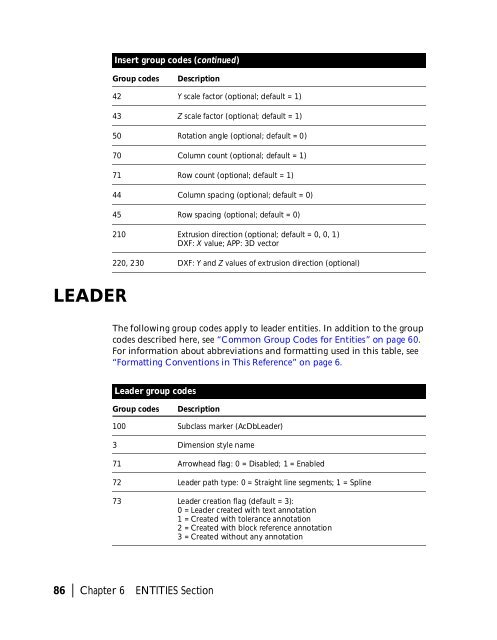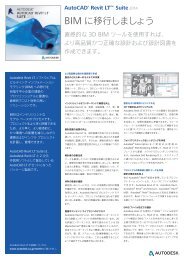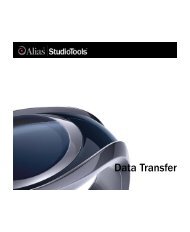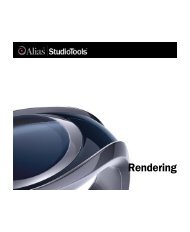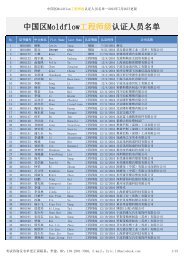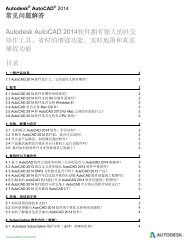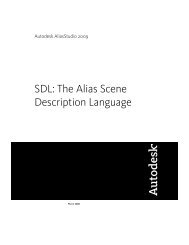Create successful ePaper yourself
Turn your PDF publications into a flip-book with our unique Google optimized e-Paper software.
Insert group codes (continued)<br />
Group codes<br />
Description<br />
42 Y scale factor (optional; default = 1)<br />
43 Z scale factor (optional; default = 1)<br />
50 Rotation angle (optional; default = 0)<br />
70 Column count (optional; default = 1)<br />
71 Row count (optional; default = 1)<br />
44 Column spacing (optional; default = 0)<br />
45 Row spacing (optional; default = 0)<br />
210 Extrusion direction (optional; default = 0, 0, 1)<br />
DXF: X value; APP: 3D vector<br />
220, 230 DXF: Y and Z values of extrusion direction (optional)<br />
LEADER<br />
The following group codes apply to leader entities. In addition to the group<br />
codes described here, see “Common Group Codes for Entities” on page 60.<br />
For information about abbreviations and formatting used in this table, see<br />
“Formatting Conventions in This Reference” on page 6.<br />
Leader group codes<br />
Group codes<br />
Description<br />
100 Subclass marker (AcDbLeader)<br />
3 Dimension style name<br />
71 Arrowhead flag: 0 = Disabled; 1 = Enabled<br />
72 Leader path type: 0 = Straight line segments; 1 = Spline<br />
73 Leader creation flag (default = 3):<br />
0 = Leader created with text annotation<br />
1 = Created with tolerance annotation<br />
2 = Created with block reference annotation<br />
3 = Created without any annotation<br />
86 | Chapter 6 ENTITIES Section


